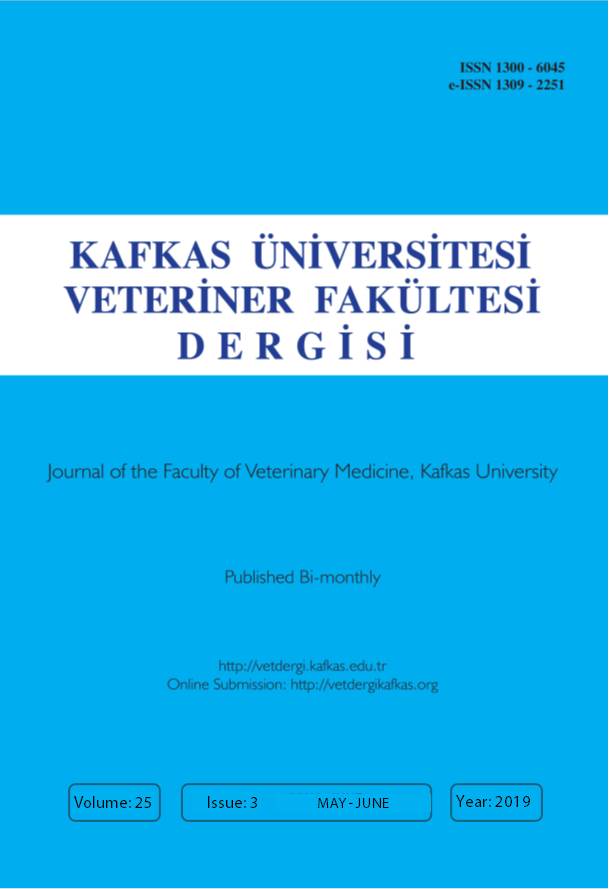
This journal is licensed under a Creative Commons Attribution-NonCommercial 4.0 International License
Kafkas Üniversitesi Veteriner Fakültesi Dergisi
2019 , Vol 25 , Issue 3
Isolation and Molecular Characterization of Thermophilic Campylobacter spp. in Dogs and Cats
1Department of Microbiology, Faculty of Veterinary Medicine, Hatay Mustafa Kemal University, TR-31060 Hatay - TURKEY
DOI :
10.9775/kvfd.2018.20952
This study aimed to evaluate the occurence, virulence properties, genetic diversity, antimicrobial susceptibilities and genetic determinants
of resistance of thermophilic Campylobacters from dogs and cats under different housing conditions. Rectal swabs were taken from 136 dogs
(household dogs, n=56; shelter-housed dogs, n=80), and 14 shelter-housed cats. Antimicrobial susceptibilities of the isolates were performed
by disc diffusion method. Tetracycline (tetO), ampicillin (blaOXA-61), aminoglycoside (aph-3-1) resistance and multidrug efflux pump (cmeB)
genes were investigated by PCR. The genetic diversity among the isolates was determined by sequence analysis of short variable regions
(SVRs) of flaA gene. The presence of virulence and toxin genes was also investigated by PCR. Campylobacter were isolated from 33.8% of
dogs and 28.6% of cats. C. jejuni was the most common species in both dogs (52.2%) and cats (100%), followed by C. coli, which was isolated
from 41.3% of dogs. High rates of resistance against nalidixic acid (78.7%), ciprofloxacin (74.5%), ampicillin (68.1%), tetracycline (53.2%)
were observed. The frequency of flaA, virB11, cdtA, cdtB, cdtC, racR, cadF, ciaB, dnaJ and pldA genes was 100%, 2.1%, 83%, 72.3%, 72.3%,
57.4%, 93.6%, 12.8%, 53.2% and 44.7%, respectively. Based on flaA-SVR typing, 17 different alleles were determined among the isolates. The
results of this study suggested that pet animals were colonized with antimicrobial resistant thermophilic Campylobacter spp. having high
pathogenic potential and genetic diversity.
Keywords :
Thermophilic campylobacter, Antimicrobial resistance, Virulence, flaA-SVR typing










